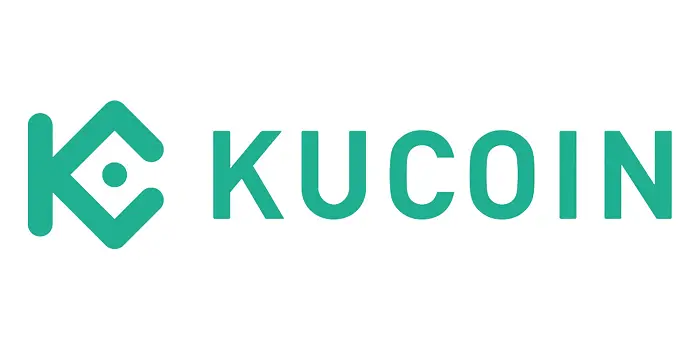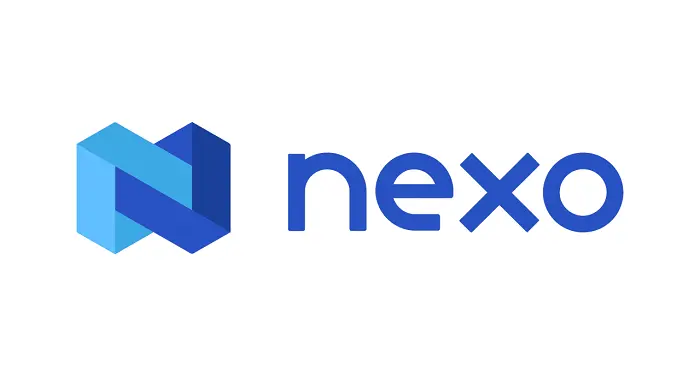In this guide, we’ll break down how to successfully build a no trading fee crypto exchange, and what it takes to thrive in a highly competitive market.
Breaking down no fee crypto exchange for startups
A no-fee crypto exchange is a platform that allows users to trade cryptocurrencies without charging the standard fees typically associated with crypto transactions. These fees often include trading fees (a percentage of the transaction), withdrawal fees, or deposit fees, which can add up and cut into traders’ profits.
Eliminating these fees makes no-fee crypto exchanges attractive to traders seeking a more cost-efficient trading experience. When startups offer a zero-fee structure, these platforms provide a clear advantage, allowing users to fully benefit from each trade without worrying about hidden charges.
How no-fee crypto exchanges make money
Even though no-fee exchanges don’t charge traditional fees, they still make money through other methods. Startups should take note of this in order to attract users with this no-fee structure while still making a profit. The following are the methods that startups should use to generate profit:
- Spread-dased revenue: Instead of charging transaction fees, these platforms often profit from the spread—the difference between the buying and selling prices of an asset. Traders pay a slightly higher price when buying and receive a to lower price when selling.
- Premium services: Many no-fee exchanges offer premium memberships or additional services for advanced traders. These could include features like faster withdrawals, lower spreads, or advanced trading tools, which come at a cost.
- Advertisements and Partnerships: Some platforms partner with cryptocurrency projects to list their tokens or display advertisements, generating revenue from sponsorships and featured listings.
- Data monetization: Aggregated trading data from users can be valuable to institutional investors and third parties, allowing exchanges to sell market insights while maintaining user privacy.
The pros and cons of crypto exchange no fees applying to your business
When applying no-fee structure to your crypto exchange, it’s worth considering both the benefits and potential downsides. Let’s take a look at some of the key pros and cons:
Pros
- Attracting users quickly: Offering zero fees can be a major incentive for attracting a large user base, especially in a crowded market. For a startup, this can be a powerful differentiator, helping to onboard users faster without the barrier of trading fees.
- Building brand loyalty: By eliminating fees, your exchange can create a reputation for being user-friendly and cost-conscious, increasing user retention and loyalty. This strategy could lead to a community-driven platform, where users feel the platform aligns with their financial interests.
- Competing in a saturated market: The crypto exchange market is highly competitive, and a no-fee model can serve as a competitive edge against established players. Startups can carve out a niche by appealing to cost-conscious traders and crypto enthusiasts.
- Increased transaction volume: With no fees, traders may be more inclined to trade frequently, leading to higher overall transaction volume. Even with spreads or other revenue streams, increased trading volume can lead to a steady revenue stream over time.
Cons and challenges
1. Development and maintenance costs
Offering a no-fee service can be highly attractive to users, but it doesn’t mean that operating costs disappear. Startups face significant development and infrastructure expenses when building and maintaining a secure, fast, and scalable exchange platform.
Since there is no direct revenue from transaction fees, the burden of covering costs like server upkeep, software updates, and support services becomes even heavier. Startups must find alternative income sources (like premium services) while ensuring the platform remains cost-effective and competitive in terms of performance and reliability.
2. Security and compliance
Security is one of the top priorities in the cryptocurrency space, and maintaining a no-fee exchange comes with no exceptions. Implementing robust security protocols to protect against hacks, fraud, and breaches is expensive and time-consuming, especially when profits are thinner due to the lack of transaction fees.
Additionally, startups must navigate regulatory compliance across different jurisdictions, which requires both legal expertise and financial resources. Not staying compliant can lead to fines or shutdowns, especially as governments increasingly regulate crypto platforms. This is a significant challenge for startups with limited funds and manpower.
3. Competition with established exchanges
Competing against large, well-established crypto exchanges like Binance or Coinbase is a major hurdle for startups, even with a no-fee model. Established exchanges already have strong brand loyalty, vast user bases, liquidity, and resources to offer a wider range of services. Startups will need to work hard to differentiate themselves—whether through superior user experience, innovative features, or unique partnerships—and build trust among users who are hesitant to move to a newer platform.
Moreover, large exchanges can easily adjust their fee structures or add promotions to neutralize a startup’s competitive advantage, making it harder to sustain user growth.
4. Managing user expectations
Users often have elevated expectations from a no-fee exchange, which can place considerable pressure on startups to manage these expectations while ensuring service quality is not compromised. The promise of no transaction fees might lead users to anticipate equally high standards in other areas such as customer support, uptime, and transaction speed.
It is crucial for startups to communicate openly about how they can sustain high-quality service without fees and to implement efficient operational processes to deliver on these user expectations consistently.
How to solve the challenges
1. Development and maintenance cost
Leverage cloud infrastructure: Startups can reduce upfront costs by using scalable cloud infrastructure like AWS, Google Cloud, or Azure. These platforms offer flexible, pay-as-you-go pricing, allowing your exchange to scale as your user base grows without requiring significant initial investment.
Optimize operational efficiency: Automating routine tasks like customer support (via AI chatbots) or trade monitoring (with algorithmic tools) can help reduce ongoing operational expenses. Use lean development strategies and open-source blockchain technologies to keep initial costs lower.
Alternative revenue models: Since the no-fee model means reduced direct income, startups can generate revenue through other avenues such as:
- Spreads: Earning revenue from the buy-sell spread of crypto assets.
- Premium features: Offering advanced tools or services like priority withdrawals, advanced trading options, or staking rewards for paying users.
- Listing fees: Charging cryptocurrency projects to list their tokens on the platform.
- Interest or loans: Offering DeFi-related features like lending or staking services to generate interest from locked funds.

2. Security and compliance
Invest in strong security protocols:
- Multi-layered security: Implement multi-factor authentication (MFA), end-to-end encryption, cold storage for funds, and regular security audits to protect user data and assets.
- Bug Bounty Programs: Encouraging ethical hackers to identify vulnerabilities before malicious actors exploit them.
Compliance as a competitive advantage:
- Stay Proactive with regulations: Ensure that your platform is compliant with local regulations (such as KYC/AML policies) from the start. Working with legal experts and staying updated on regulatory changes can prevent costly fines or legal action.
- Collaborate with regulatory bodies: Being transparent and building relationships with regulatory bodies can position your startup as a trustworthy player, which is critical in gaining user trust.
- Third-party audits: Regularly conduct third-party audits for security, privacy, and compliance to build confidence among users and investors.
3. Competition with established exchanges
- Niche targeting: Competing directly with industry giants like Binance or Coinbase is difficult, but focusing on a specific niche can differentiate your startup. For example, you could target regional markets, specific crypto tokens, or unique use cases like privacy coins or low-cap trading.
- Focus on user experience (UX): Offering a smooth, intuitive user interface can give you an edge over larger platforms that may be slower to innovate. Focus on a simplified onboarding process, seamless trading experience, and customer support.
- Build liquidity early: Partner with liquidity providers or implement strategies such as market-making to ensure your exchange has enough liquidity to support trading volumes. This will reduce slippage and improve the overall trading experience for users.
- Community-driven growth: Build a strong community of early adopters and advocates. Engaging users through social media, community rewards, and referral programs can boost growth and brand loyalty without needing large marketing budgets.
- Unique promotions: Provide attractive, time-limited promotions like free trading for early users, referral bonuses, or token airdrops. These can help generate buzz and build a user base, especially at launch.
4. Managing user expectations
- Transparent operational model: From the outset, it is critical to be transparent about how the exchange operates without transaction fees. Clarify that the platform still generates revenue through other means like advertising, price spreads, or premium services. This helps users understand that while they are not paying direct fees, the exchange maintains its operations and quality without compromising service integrity.
- Maintaining consistent service quality: Ensure the platform is robust enough to manage high transaction volumes without slowing down or experiencing technical errors. Stability in performance reassures users that they continue to receive high-quality service, despite the absence of fees.
- Frequent communication and trust building: Regularly update users on platform activities, product improvements, or new features. This continual engagement helps maintain a connection with users, reassuring them of the platform’s commitment to their needs, even in a no-fee model.
- Offering value-added services: To exceed high user expectations, provide additional services such as cryptocurrency education, market analysis tools, or enhanced security features. These services create added value and increase user satisfaction, reinforcing the platform’s commitment to quality without imposing transaction fees.
- Optimizing customer support: With high user expectations, having a rapid and effective customer support system is essential. Ensuring that users can easily resolve any issues promptly minimizes frustration and helps manage their expectations realistically, promoting a positive experience with the platform.
These revisions aim to directly address the original points you raised, ensuring that the content remains professional, concise, and aligned with the previous sections.
Top 3 no fee exchange platform for startups to learn from
To create a successful no-fee crypto exchange platform, it’s crucial to study existing examples and draw inspiration from their approaches. Below, we’ve highlighted three standout no-fee exchange platforms, each offering a unique appeal to traders. These platforms provide invaluable insights for businesses aiming to create a cost-efficient trading experience.
1. MEXC – No fees on spot and futures maker orders

MEXC is a well-established cryptocurrency exchange that has implemented a unique no-fee structure for maker orders in both spot and futures markets. This exchange offers traders the opportunity to trade with up to 200x leverage, making it particularly appealing to those looking to maximize potential returns without incurring trading fees.
Model: MEXC’s model is centered around providing zero fees for maker orders (limit orders that supply liquidity), which is a key differentiator in a competitive market. For taker orders, MEXC charges minimal fees, with 0.1% for spot markets and 0.01% for futures markets, making it an affordable option for traders seeking to execute larger, more complex strategies.
Lessons learned:
- Zero fees for liquidity providers: By not charging fees for maker orders, MEXC enhances market liquidity, creating a dynamic trading environment that benefits both the exchange and its users.
- Competitive edge: MEXC distinguishes itself from larger exchanges like Binance by offering an attractive no-fee model for cost-conscious traders
Technology application: MEXC’s no-fee trading is powered by:
- Automated market making (AMM): MEXC uses Go (Golang) and Node.js to run its AMM, which facilitates liquidity without needing a centralized order book.
- Matching engine: Utilizes Kafka and RabbitMQ, processing 1.4 million transactions per second, ensuring smooth trade execution even with zero fees.
- Security: Features like multi-signature wallets and cold storage ensure secure handling of funds, providing peace of mind for traders.
Results:
- User growth: MEXC has seen significant growth in its user base, now supporting over 10 million users globally due to the no-fee policy on maker orders.
- Market coverage: MEXC supports 2,622 cryptocurrencies and 3,019 trading pairs, making it one of the most diverse exchanges available.
- Attraction to retail and institutional traders: The combination of zero fees for makers and minimal fees for takers has successfully attracted both retail and institutional traders.
- Value-added features: Additional features like leveraged tokens, copy trading, and demo accounts further enhance MEXC’s offering, adding more value for traders
- Liquidity boost: The no-fee model has proven successful in significantly boosting liquidity, driving higher trading volumes while maintaining profitability through futures trading and other services.
2. KuCoin – Tiered fee structure with low fees

KuCoin, one of the fastest-growing cryptocurrency exchanges, has adopted a low-fee model through its tiered fee structure. This allows users to reduce their trading fees based on their trading volume or by holding KuCoin Token (KCS), KuCoin’s native token. This model is particularly appealing to high-volume traders and those looking for long-term savings on transaction costs.
Model: KuCoin’s fee structure operates on a tiered system, where fees decrease as users’ trading volumes increase. Additionally, users holding KCS benefit from further discounts, making the exchange cost-effective for frequent traders. Beyond its low-fee model, KuCoin offers a wide range of services, including spot trading, futures trading, margin trading, staking, and lending, providing multiple revenue streams for both the exchange and its users.
Lessons learned:
- Incentivizing high-volume trading: A tiered fee structure encourages users to trade more to qualify for lower fees, boosting trading activity across the platform.
- Token-driven discounts: Offering discounts for holding KCS creates incentives for users to retain the token, which both enhances its value and fosters user loyalty.
- Service diversification: KuCoin balances its low fees with a wide range of services, like staking and lending, that generate sustainable revenue while keeping users engaged.
Technology application: KuCoin’s infrastructure ensures high performance, security, and scalability:
- Matching engine: Built with C++ and Java, KuCoin’s matching engine processes millions of trades per second, crucial for low-fee trading efficiency.
- Risk management: Powered by Python and machine learning, KuCoin’s system detects risks in real-time, securing users’ funds in volatile markets.
- Order book and trade history: MySQL and PostgreSQL store and retrieve large amounts of order data, enabling efficient trade execution.
- Security: KuCoin uses multi-signature wallets and cold storage to safeguard user funds, while real-time risk detection systems, built on machine learning, protect against fraud and unauthorized access
Results:
- High trading volume: KuCoin is one of the largest exchanges by trade volume, with a vast selection of over 700 cryptocurrencies.
- KCS token success: The use of KuCoin’s native token (KCS) for fee discounts has driven demand, strengthening the platform’s ecosystem and user loyalty.
- Global reach: KuCoin serves over 30 million users in 200+ countries, providing spot, futures, and margin trading, as well as lending services (
- Sustainable growth: KuCoin’s ability to offer low fees while maintaining a diverse range of services has contributed to its sustained growth in trading volume and user base.
3. Nexo – Zero-fee trading with complementary crypto features

Nexo initially gained recognition for its crypto-backed loans and interest-earning wallets but has since expanded into the trading space, offering a zero-fee model. Traders can buy and sell over 70 cryptocurrencies, including Bitcoin, Ethereum, and Litecoin, without incurring transaction fees, making Nexo an attractive platform for those looking for cost-efficient trading options.
Model: Nexo’s no-fee model applies to spot trading, where users can trade without paying any commissions or hidden fees. In addition, the platform provides up to 50x leverage for spot trading, enhancing the potential returns for experienced traders. Nexo generates revenue through lending services, crypto interest accounts, and a proprietary token (NEXO), which offers additional benefits such as higher interest rates and lower borrowing costs for token holders.
Lessons learned:
- Diversified revenue model: Nexo sustains its no-fee trading model by leveraging other services like lending and interest-earning accounts.
- Token incentives: The NEXO token provides discounts and additional perks, encouraging users to hold the token and creating loyalty.
- Appealing to multiple user types: Nexo’s combination of trading and investment services attracts both active traders and passive investors.
Technology application: Nexo’s platform is designed to handle large transaction volumes efficiently while maintaining the security and trust of its users:
- Trading engine: Nexo uses C++ and Java to run its high-frequency trading engine, enabling fast, no-fee transactions with minimal latency.
- Blockchain integration: Built on Ethereum and other blockchain networks, ensuring transparency and security across its no-fee trading and lending services.
- Security & risk management: Utilizes cold storage and multi-signature wallets for asset protection, alongside real-time monitoring powered by Python to safeguard funds and transactions
Results:
- User growth: Nexo’s no-fee model, boosted by the Nexo Token Hunt, has attracted and retained a large user base by encouraging engagement across its services
- Increased engagement: Crypto-backed loans, interest accounts, and NEXO token benefits have boosted retention and engagement.
- Sustainable model: By leveraging multiple services, Nexo has made its no-fee trading model sustainable.
- Industry leadership: Nexo is now a leader in crypto lending and trading with competitive rates and innovative products.
Build a no fee crypto exchange platform with Synodus expertise
Looking to build a winning no fee crypto exchange platform? Synodus has the expertise to help you do just that.
Synodus’s crypto exchange development services
Synodus stands out in the crypto exchange development landscape by offering comprehensive solutions tailored to the dynamic needs of its clients. From startups to established enterprises looking to expand into the cryptocurrency space, Synodus provides robust platform development supported by deep blockchain expertise.
Our crypto exchange services include:
- White label platforms: Your unique brand, backed by our robust technology
- P2P decentralized exchanges: Direct user-to-user trading, maximizing efficiency
- Smart contract-enabled DEX: Automation and security at the forefront.
Tech stack and innovative approach
Synodus utilizes a diverse tech stack, including Node.js, NestJS, PostgreSQL, Redis, Google Cloud Pubsub, Flutter, etc ensuring that each exchange is built on a solid and scalable foundation. This tech arsenal allows for the creation of platforms that are not only fast and reliable but also capable of evolving with the market’s demands.
What sets Synodus apart?
Synodus is distinguished by several critical advantages:
- Cost efficiency with high value: Leveraging Vietnam’s competitive development cost, Synodus offers services at rates between $16 and $30 per hour—well below the global industry average of $25 to $150 ((based on our research on reputable B2B review sites like Clutch) —allowing clients to save up to 73.71% without sacrificing quality.
- Fast and reliable delivery: Time is critical in crypto. Synodus delivers tailored proposals within five days and starts project onboarding in just 14 days—from concept to execution, we ensure everything moves quickly and smoothly.
- Tailored solutions for your brand: Every platform we build is fully customized to fit your brand identity and specific operational requirements. Our personalized approach guarantees that your exchange will stand out in an increasingly competitive market.
- Blockchain expertise at scale: With over 250 blockchain professionals, our team offers deep technical expertise that ensures your platform is secure, scalable, and future-proof. We stay ahead of market trends, so your project does too.
- Designed for users, built for growth: We put your users first. Synodus designs interfaces that transform complex trading systems into intuitive, visually engaging experiences, boosting user retention and liquidity.
- Regulatory compliance without compromise: We ensure your platform meets regulatory standards with ease, fostering trust with both users and regulators while maintaining functionality and efficiency.
- Long-term support: Beyond launch, Synodus provides continuous support to ensure your platform evolves with the market and stays competitive over time.
Client success story: A market transformation
A vivid example of our impact is seen in our collaboration with a startup that wanted to integrate a decentralized exchange into their offering. Through our white-label solution, they witnessed:
- 150% Growth in user engagement: Post-launch, the platform saw its user base more than double, driven by enhanced trading operations and user-friendly features.
- Rapid deployment: Our solution cut down their time-to-market significantly, enabling them to seize market opportunities quickly.
- Strong compliance framework: Our rigorous adherence to compliance standards not only facilitated smooth operations but also fortified their reputation in the decentralized finance sector.
Whether you’re entering the crypto market for the first time or looking to expand your existing operations, Synodus is here to accelerate your journey. Visit our portfolio for more success stories, or contact us directly to discuss how we can tailor our services to your needs.
Conclusion
Imagine running a crypto exchange with no fees, where traders are drawn in by the simplicity and cost-effectiveness of the platform. That’s the future you can build. Staying ahead means more than just waiving fees—it’s about continuously evolving, maintaining your platform, and listening to your users.
Are you ready to revolutionize the crypto market? Build a no fee crypto exchange that traders will love, with seamless performance and cutting-edge innovation. Reach out to Synodus today, and let’s make your vision a reality.
How useful was this post?
Click on a star to rate it!
Average rating / 5. Vote count:
No votes so far! Be the first to rate this post.




